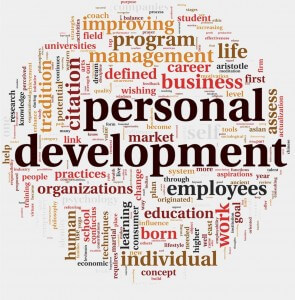On the surface these four points seem to fulfill what the company wants and (and what you want) in a needs assessment.
The company wants to:
- Inform you of currently available training and determine your need or interest in taking training,
- Gather and prioritize your ideas for additional training areas,
- Determine the capacity of company staff to train others, and
- Assess how you like to take training.
These four, with the liberal use of “you” try to tell you in the nicest way that this training is all about you, but you know otherwise. It is, of course, in your best interest if you can predict the value it will ultimately have for you. But this is still framed for the company’s best interest.

Taken by themselves, they are fine. They certainly represent the thinking and collaboration of several key staff members in coming up with these final four. The framers are team players, certainly, and they are trying to include all the employees. If asked, they probably have the same questions–but they really are team players without question.
However, it does leave some questions for others willing to ask. Input or buy-in? How will your information be used? Will it serve as justification for more funding to do the job more to your liking, or just sit there coupled with an excuse of why that can’t be accomplished? What happened to “what’s in it for me?”
Perhaps, that’s the real kicker. There is no mention of “what’s in it for me” other than you might be able to take training the way you prefer it, and helping you do your job better. If I’m already exemplary (I say modestly), will it prepare me for a promotion? Does training even count for that? If you think you don’t need training, does it matter? Sure, it does, but maybe it hasn’t been explained to you.
- The most effective training you can deliver is that training that motivates employees to use what they learn. Asking them what they need or how they prefer to be trained is an important first step.
- We always seem to start with a needs assessment (often a survey just like this), but we fail in mentioning how this training will be managed and what’s in it for me besides becoming an exemplary employee is left out of the introduction.

Perhaps a conversation or communique addressing how valuable this training will be to employees–career-wise, personally and company-wise–is important to ensure a motivated workforce. To do so, we have to assume people plan to have a company career and have goals for the future. We’re naive if we think if they don’t have. Motivated training can lead us to the company vision for the future; it benefits us in getting the most for our efforts.
We start with a needs assessment, but it has always been my opinion that you can’t assume everyone knows or remembers how this training will benefit them as well as the company.
While it’s logical that a needs assessment comes first before the training plan, consideration should be given to the weight training will be given to employees and management, and how that training will be used. I wouldn’t be surprised that in most cases the training plan is already created and this survey is to gain buy-in or rubber stamping from the employees. I could be wrong, but it is also conceivable the training budget has been set and decisions have already made on how to apply those resources. I hope not, because in those cases, a needs assessment survey like the one described is relatively pointless.
—
For more resources about training, see the Training library.
 Sections of this topic
Sections of this topic














